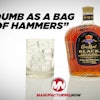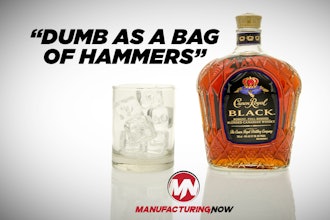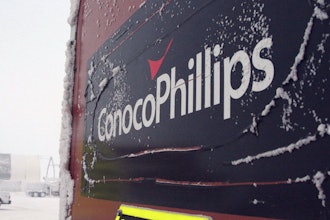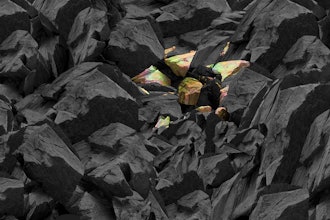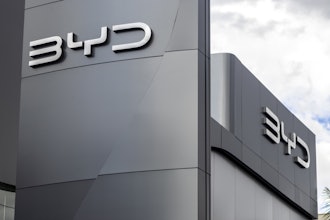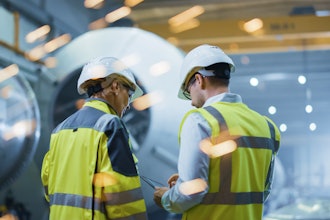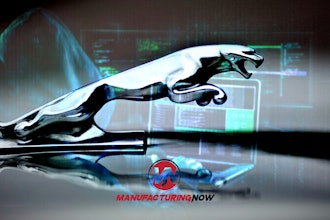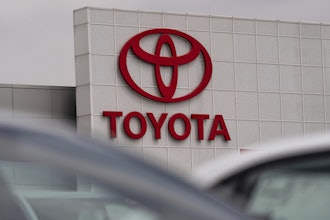By Henry H. Hesser, P.E.
There are three areas in an industrial vacuum system where effluent can be reduced. They are: the selection of the vacuum source, the piping design, and the components selection or inclusion in the vacuum “system” with the pump or source. Let’s review each of these below.
The type of vacuum source in the system dramatically affects the type and amount of effluent produced. For example, if steam jets or steam ejectors are used, they require recycle gas from the exhaust or air to be drawn in to control the delivered vacuum level to the process. In the case of air bleed, this “in-bleed” mixes with all the vapors from the system and exits out the exhaust. The only way to reduce this effluent is to put a large exhaust condenser on the steam jet exhaust and try to condense it as much as possible. In addition, a system ejector system typically has inner condensers. They are shell-and-tube condensers between the ejector stages. These condensers not only condense the steam used to power the ejectors stages but they also condense any solvents or process chemicals vaporized by the entire jet system. These liquids leave the vacuum system as water pollutants.
A liquid ring vacuum pump also requires a similar type of control as the steam jets; air “in-bleed” or recycle gas to control the delivered vacuum level similarly adds to the effluent load just as a steam ejector does. Since the systems mix the process chemicals with the ring sealant of the liquid ring pump, they are water pollutants. If in-bled air is used, it exits the system saturated to pollute the air as well.
Until about 10 years ago, mechanical vacuum pumps also contributed to the effluent load because they required a lubricant — usually oil. This lubricant or sealant would saturate with the process chemicals and pollute when the oil was changed or passed through the pump. However, their air pollution potential was greatly reduced. Today, chemical duty dry vacuum pumps, most commonly the dry screw design, have replaced older technologies in many process applications. These dry vacuum pumps do not have lubricants in the vacuum chamber to mix with the pumped process vapors, and the coolants do not contact the process vapors.
Besides the type of vacuum pump and the piping design, the components placed in the vacuum system play a big role. Typically, effluent reduction devices such as condensers and scrubbers are put on the exhaust of a vacuum system. However, these devices can be placed in front of the vacuum source and take out the same polluting constituents of the vacuum stream. In fact, if they are integrated into the vacuum system in front of the vacuum source, they can do their job of removing constituents just as well as they do the exhaust but with the added benefit of making the vacuum source smaller. It’s important to remember that shell-and-tube condensers must be designed to minimize the pressure drop they impose on the system.
Let’s consider shell-and-tube condensers in detail. They are typically used in the exhaust of vacuum systems where solvents and process chemicals are exiting the vacuum system as a source of air pollution. If they are in front of the vacuum pump, they would make a smaller vacuum pump possible by condensing out vapors. And the more the air in-leak is reduced, the more effective shell-and-tube condensers become. Some customers would be quick to point out that if you move the condenser in front of a vacuum pump, it runs at a lower absolute pressure. This lowers the dew point of the vapors. This could even require refrigeration to make the condenser sufficiently cold. This can be partly ameliorated by the use of Roots-type rotary lobe boosters to break the compression work to atmosphere into steps. By placing the condensers in the exhaust of a Roots pump, it’s possible to raise the operating pressure of the condenser and often eliminate the need for refrigeration.
The condenser itself would now have to be designed to condense and remove vapors (as condensate) within the vacuum system. This means that the condenser design would have to take into account these factors, especially lower pressure drop on the vacuum side.
In addition to shell-and-tube condensers, scrubbers (i.e. liquid gas contactors) are a typical end-of-the-line environmental clean-up tool. However, who says they have to operate at the end of the line? Why not incorporate them into the vacuum system as previously discussed regarding condensers?
Just as shell-and-tube condensers need to be designed for low pressure drop, so does the scrubber or packed bed. The differences between packed bed design at pressures above and below atmospheric are:
• Laminar liquid and gas flow
• Use of thin liquid films (no spray droplets)
• “Structured” not “random” packing or internals
• Include a liquid recycle loop and a shell-and-tube cooler in the loop to control adsorption temperature of the liquid and control the liquid-to-gas ratio
Henry H. Hesser, P.E., is the staff technical specialist at Busch LLC in Virginia Beach, VA. He presents educational technical seminars at his company’s facility as well as around the country. He can be reached at 757-963-8028. Additional information is available at www.buschusa.com.
There are three areas in an industrial vacuum system where effluent can be reduced. They are: the selection of the vacuum source, the piping design, and the components selection or inclusion in the vacuum “system” with the pump or source. Let’s review each of these below.
Vacuum Source
 |
A liquid ring vacuum pump also requires a similar type of control as the steam jets; air “in-bleed” or recycle gas to control the delivered vacuum level similarly adds to the effluent load just as a steam ejector does. Since the systems mix the process chemicals with the ring sealant of the liquid ring pump, they are water pollutants. If in-bled air is used, it exits the system saturated to pollute the air as well.
Until about 10 years ago, mechanical vacuum pumps also contributed to the effluent load because they required a lubricant — usually oil. This lubricant or sealant would saturate with the process chemicals and pollute when the oil was changed or passed through the pump. However, their air pollution potential was greatly reduced. Today, chemical duty dry vacuum pumps, most commonly the dry screw design, have replaced older technologies in many process applications. These dry vacuum pumps do not have lubricants in the vacuum chamber to mix with the pumped process vapors, and the coolants do not contact the process vapors.
Piping Design
Piping design can significantly reduce both the pressure drop across the vacuum system as well as minimize or eliminate air in-leak. Sources of air in-leak are connections — especially the use of threads, non-vacuum flanges, and packing — and non-vacuum elastomers.Sources of piping pressure drop are T-connections, short-radius elbows, and of course, the use of piping with insufficient diameter.
Components in the System
 |
Let’s consider shell-and-tube condensers in detail. They are typically used in the exhaust of vacuum systems where solvents and process chemicals are exiting the vacuum system as a source of air pollution. If they are in front of the vacuum pump, they would make a smaller vacuum pump possible by condensing out vapors. And the more the air in-leak is reduced, the more effective shell-and-tube condensers become. Some customers would be quick to point out that if you move the condenser in front of a vacuum pump, it runs at a lower absolute pressure. This lowers the dew point of the vapors. This could even require refrigeration to make the condenser sufficiently cold. This can be partly ameliorated by the use of Roots-type rotary lobe boosters to break the compression work to atmosphere into steps. By placing the condensers in the exhaust of a Roots pump, it’s possible to raise the operating pressure of the condenser and often eliminate the need for refrigeration.
The condenser itself would now have to be designed to condense and remove vapors (as condensate) within the vacuum system. This means that the condenser design would have to take into account these factors, especially lower pressure drop on the vacuum side.
In addition to shell-and-tube condensers, scrubbers (i.e. liquid gas contactors) are a typical end-of-the-line environmental clean-up tool. However, who says they have to operate at the end of the line? Why not incorporate them into the vacuum system as previously discussed regarding condensers?
Just as shell-and-tube condensers need to be designed for low pressure drop, so does the scrubber or packed bed. The differences between packed bed design at pressures above and below atmospheric are:
• Laminar liquid and gas flow
• Use of thin liquid films (no spray droplets)
• “Structured” not “random” packing or internals
• Include a liquid recycle loop and a shell-and-tube cooler in the loop to control adsorption temperature of the liquid and control the liquid-to-gas ratio
Summary
This article discussed the type of vacuum pump and its impact on the effluent. The best available technology is in one of the new dry types of process vacuum pumps. Designing the piping for as little air in-leak as possible is the second necessary goal. Putting devices such as condensers and scrubbers inside the vacuum system helps remove pollutants and may reduce the size of the vacuum pump.Henry H. Hesser, P.E., is the staff technical specialist at Busch LLC in Virginia Beach, VA. He presents educational technical seminars at his company’s facility as well as around the country. He can be reached at 757-963-8028. Additional information is available at www.buschusa.com.


